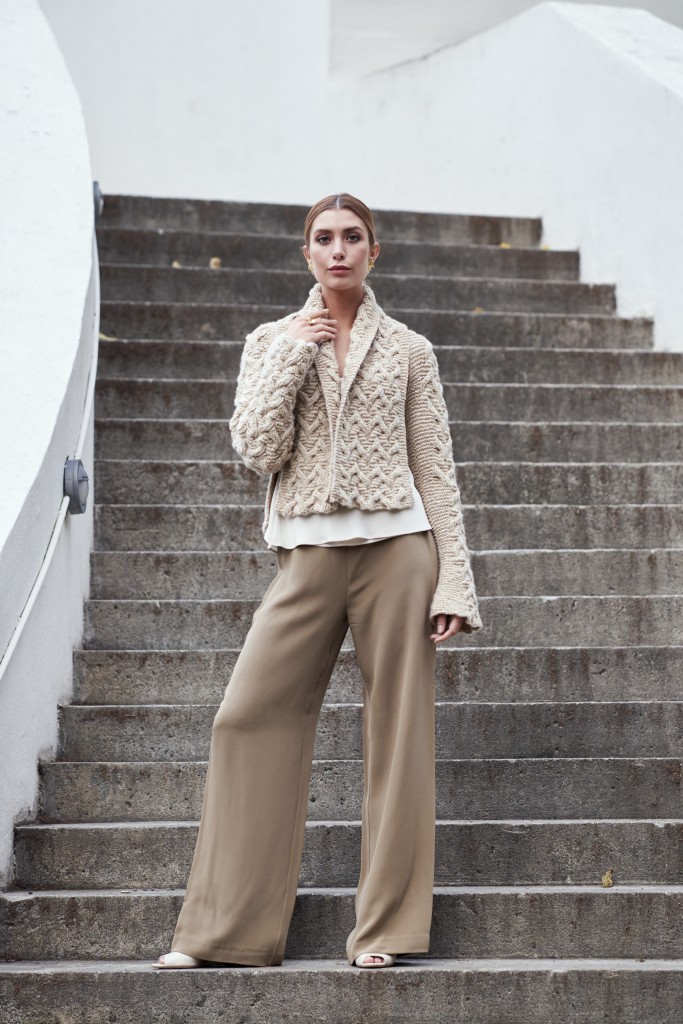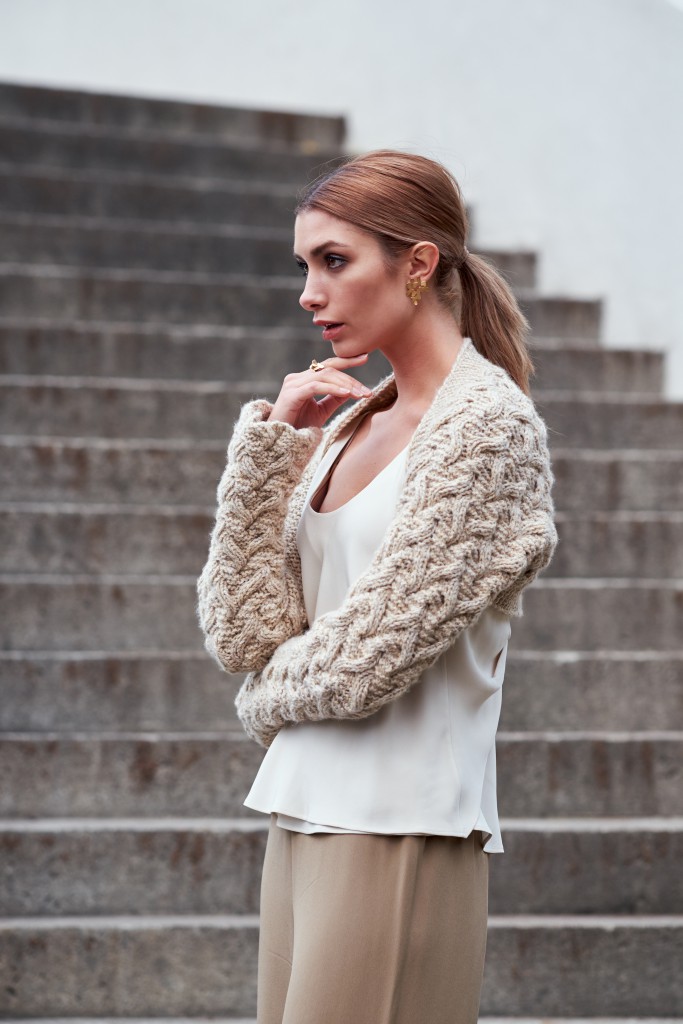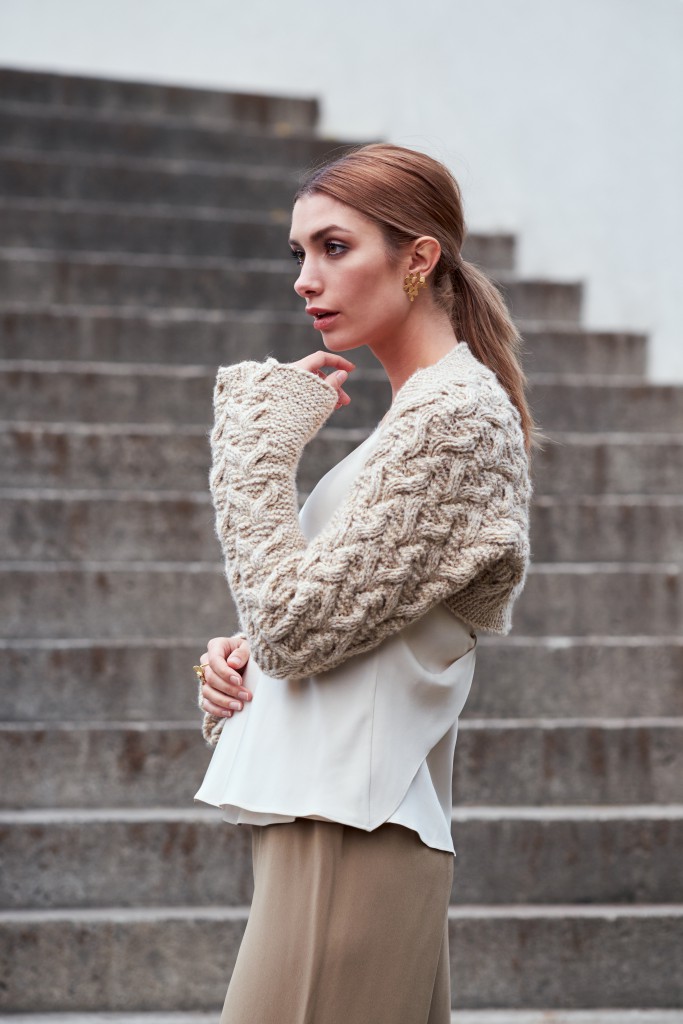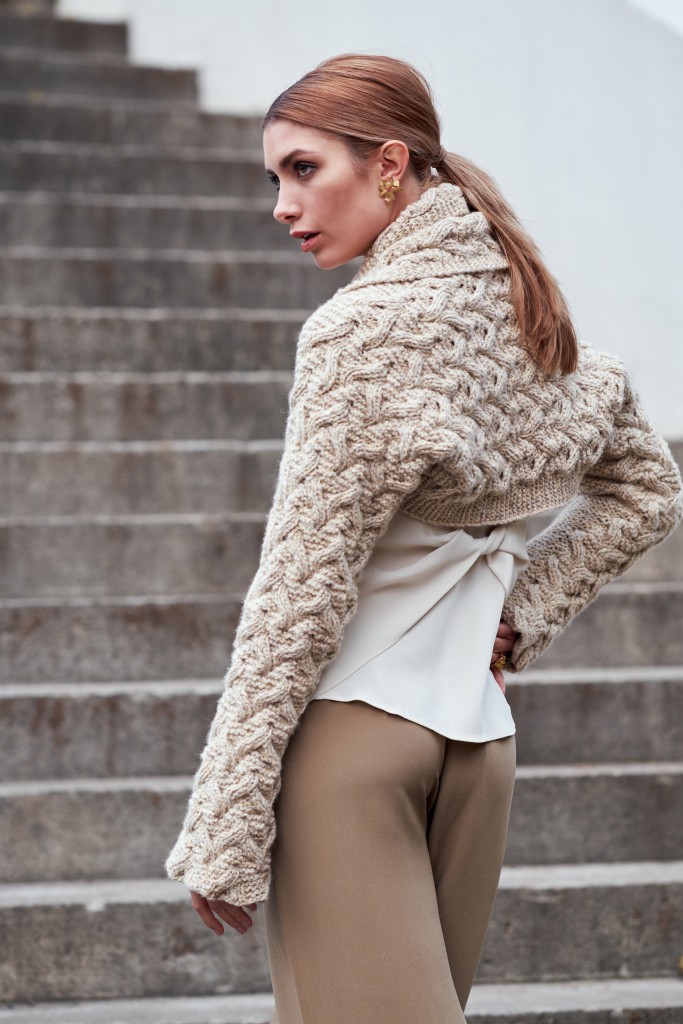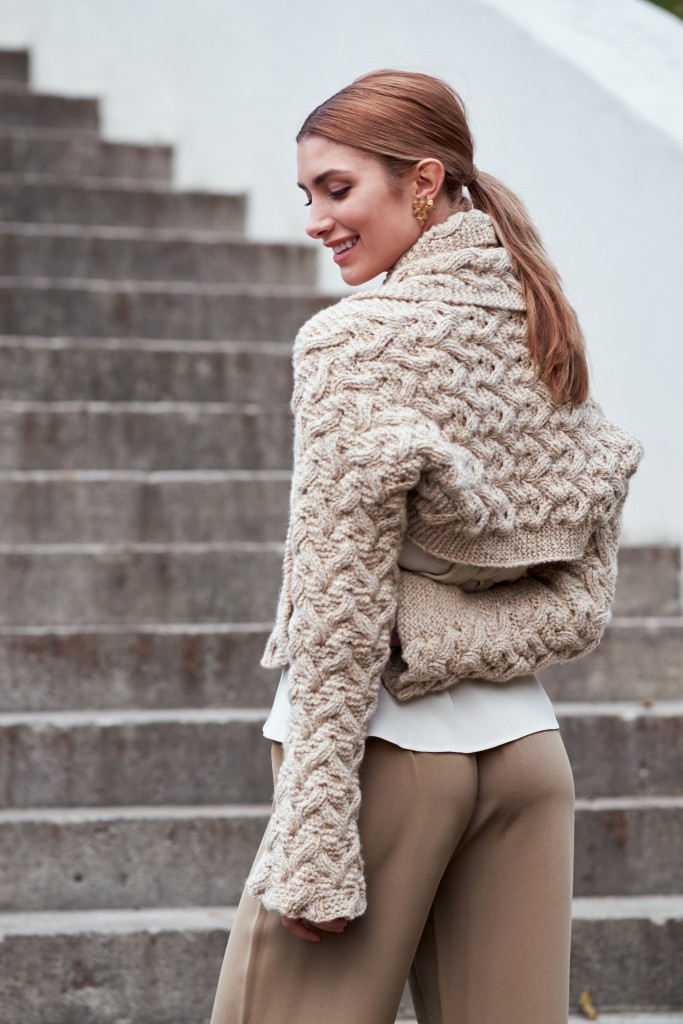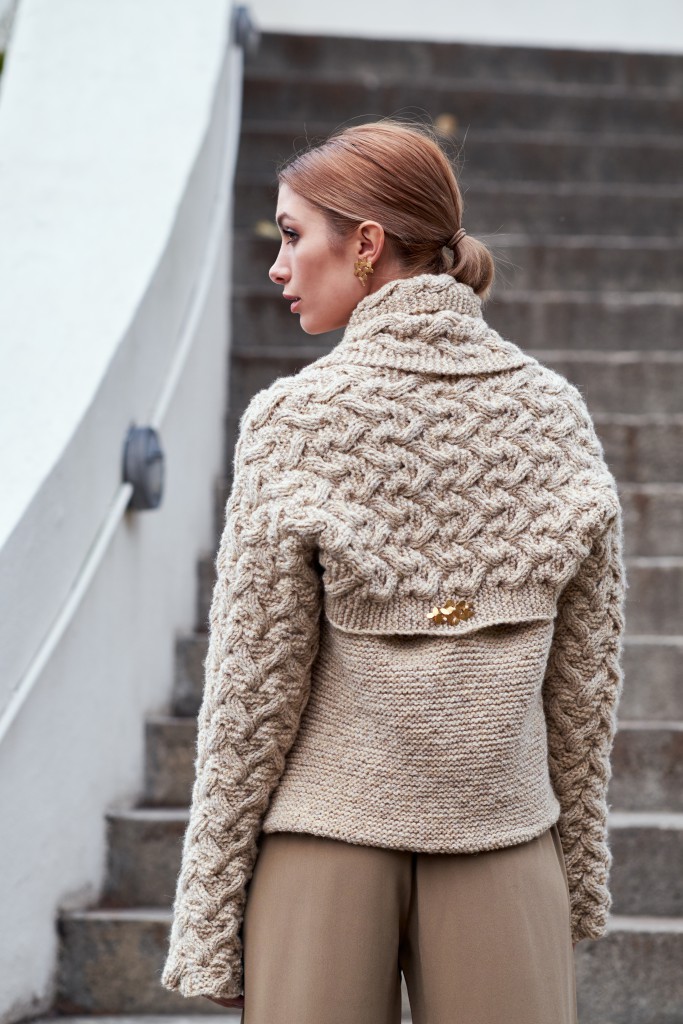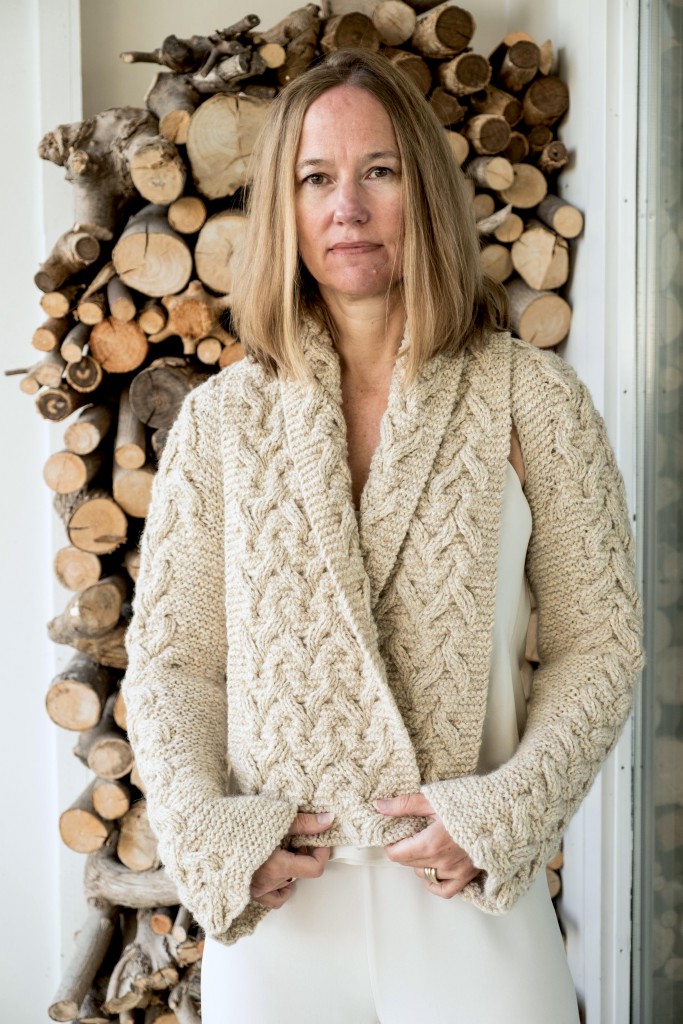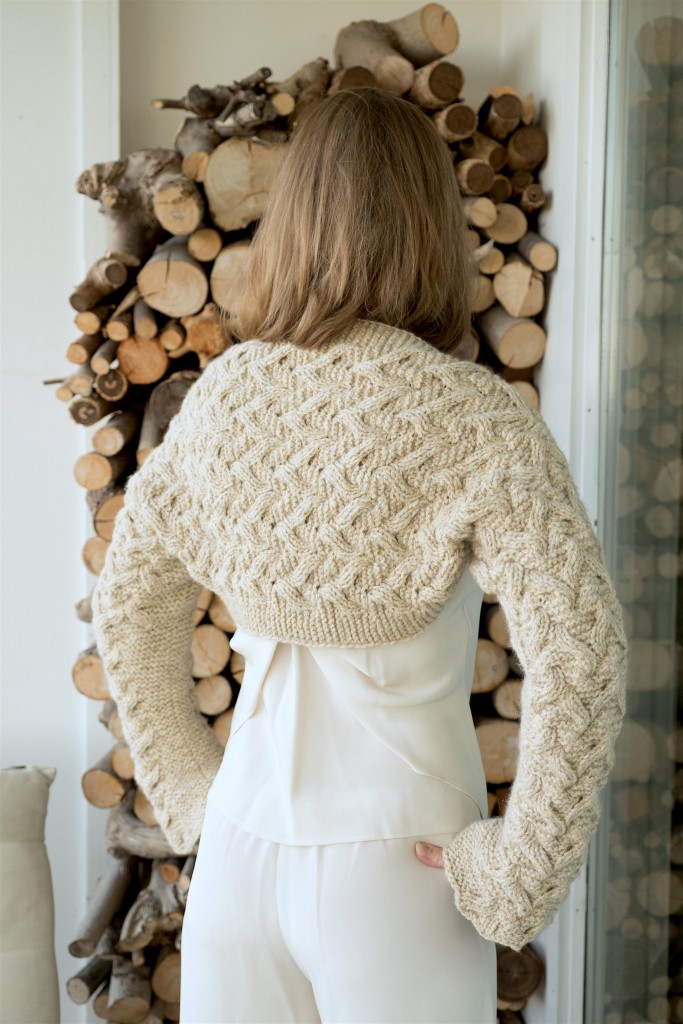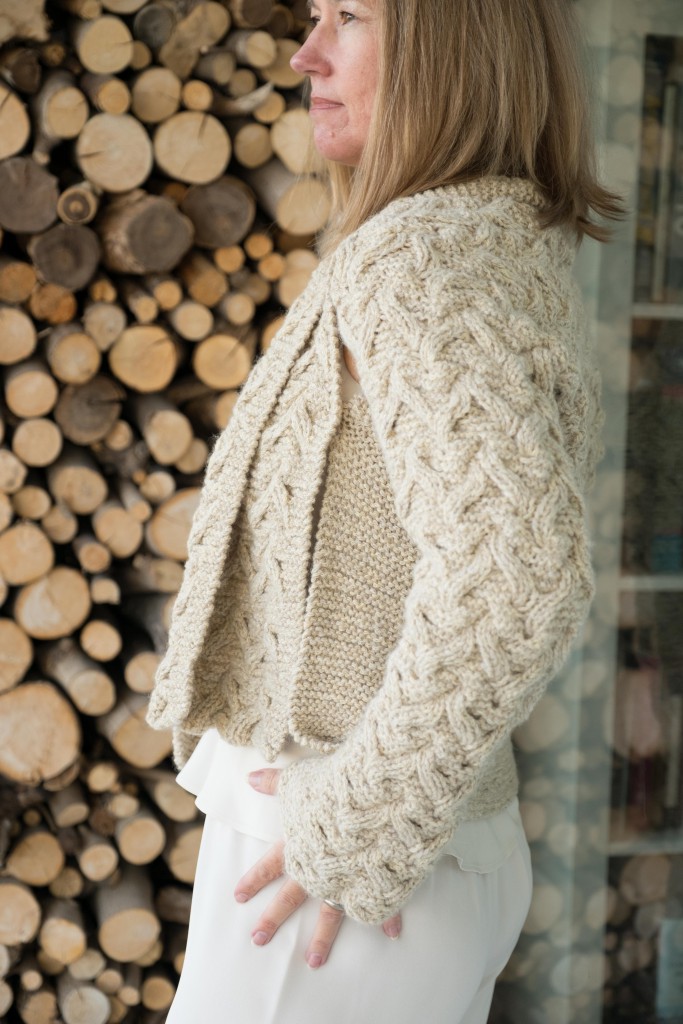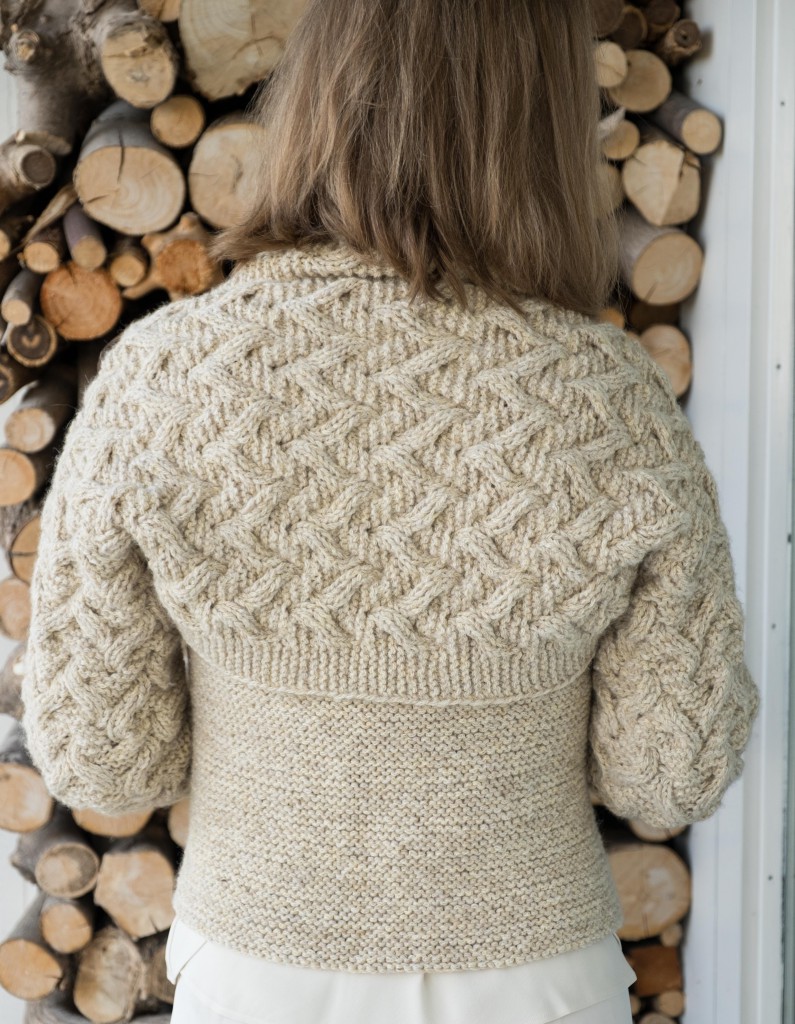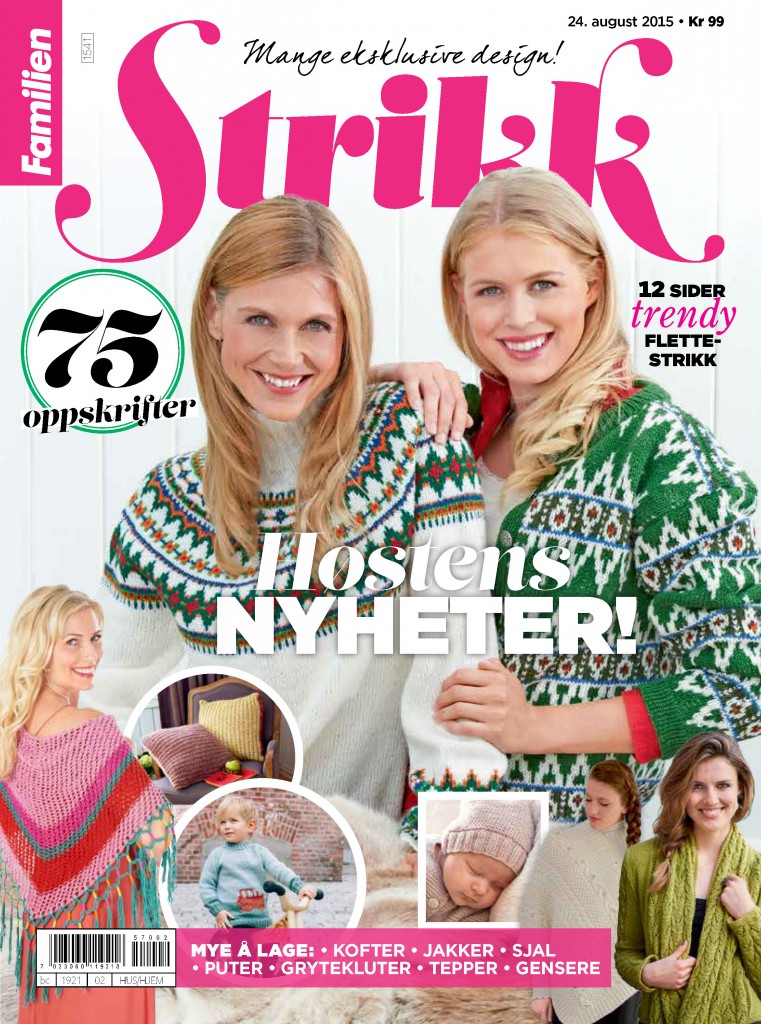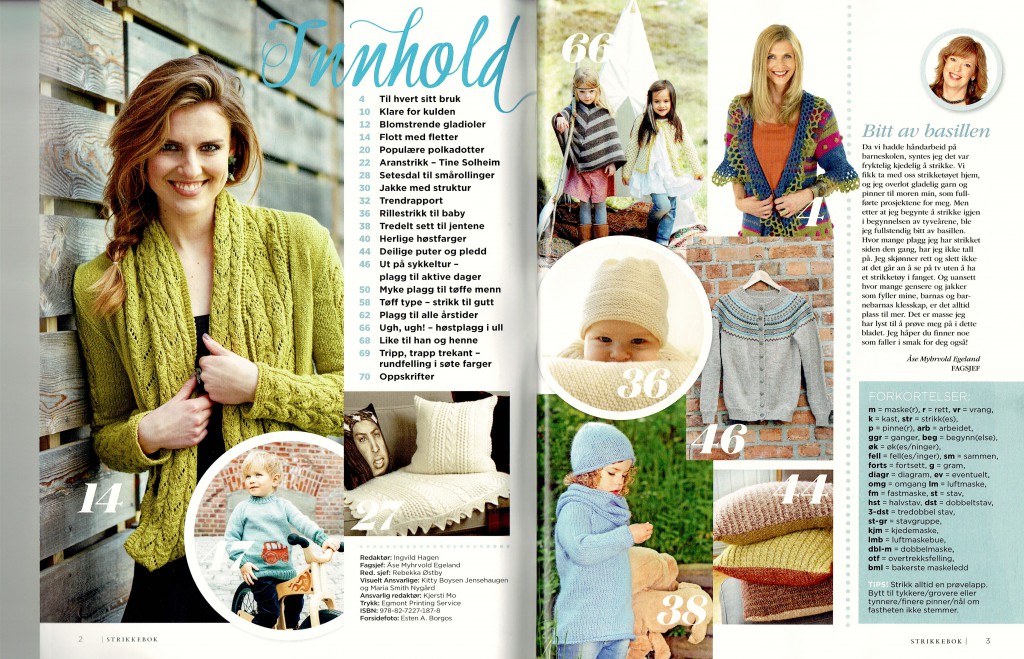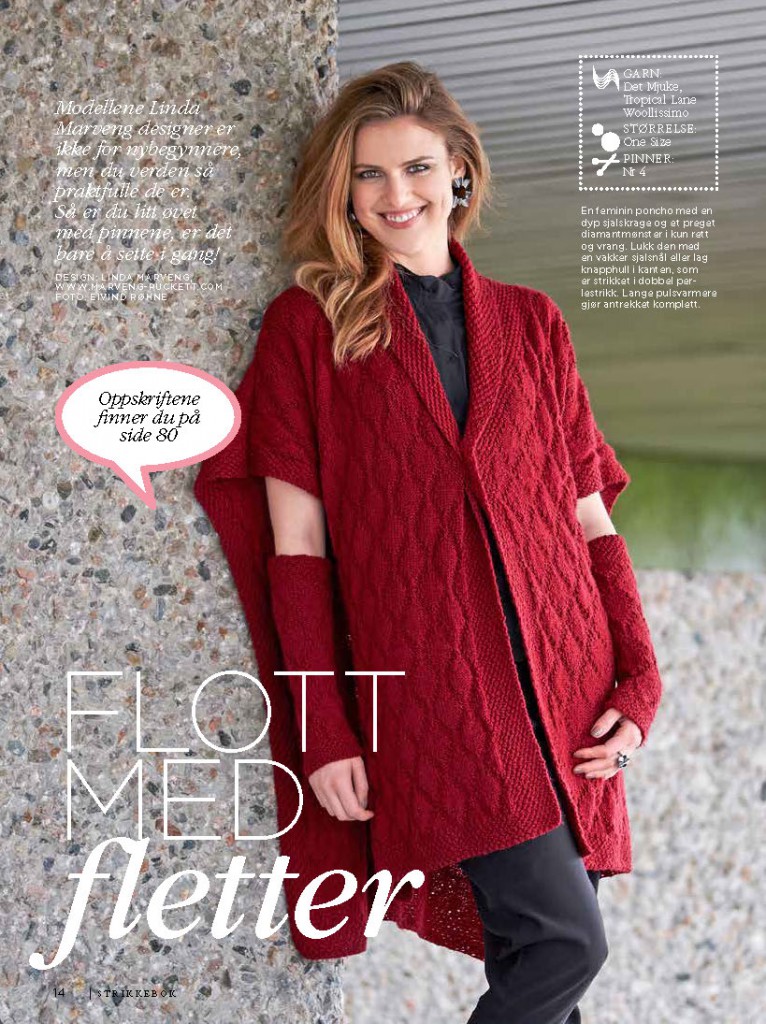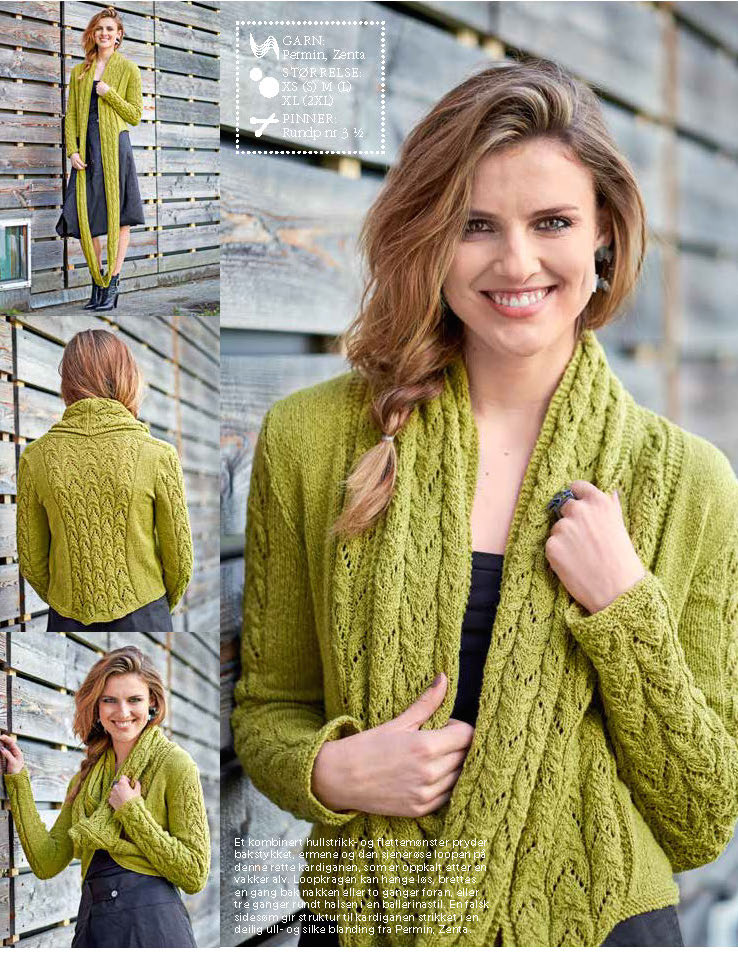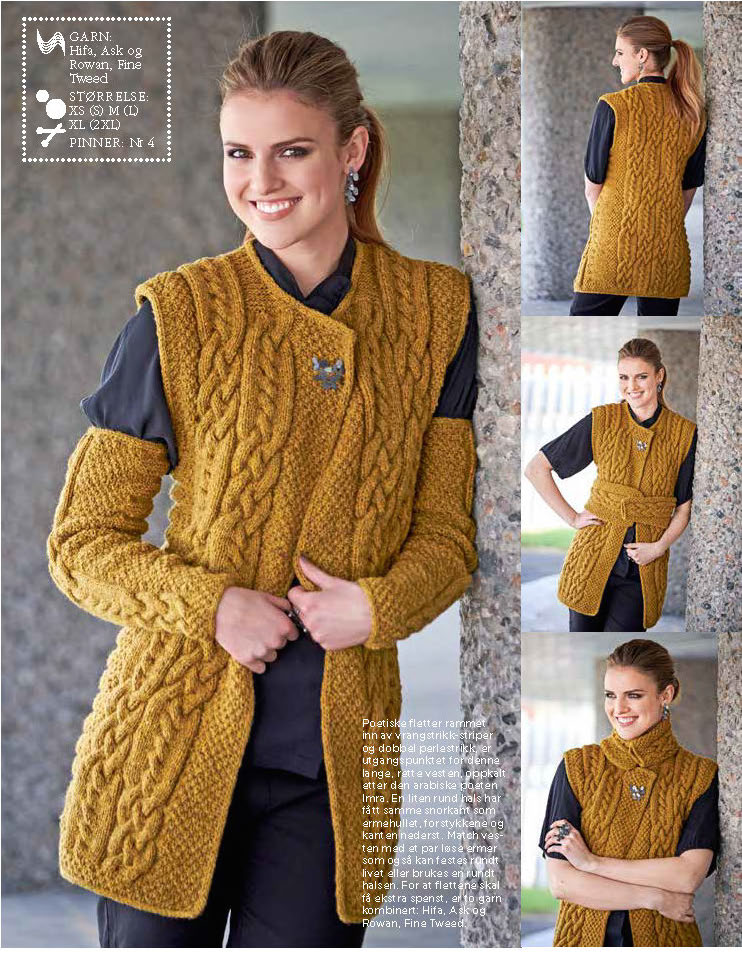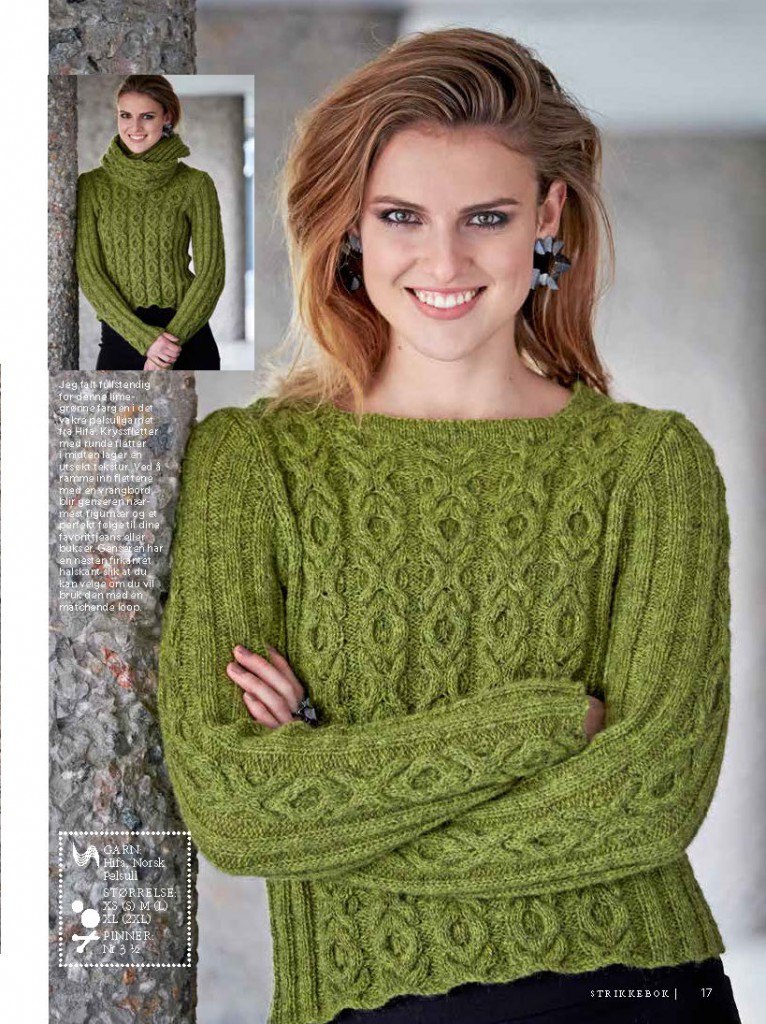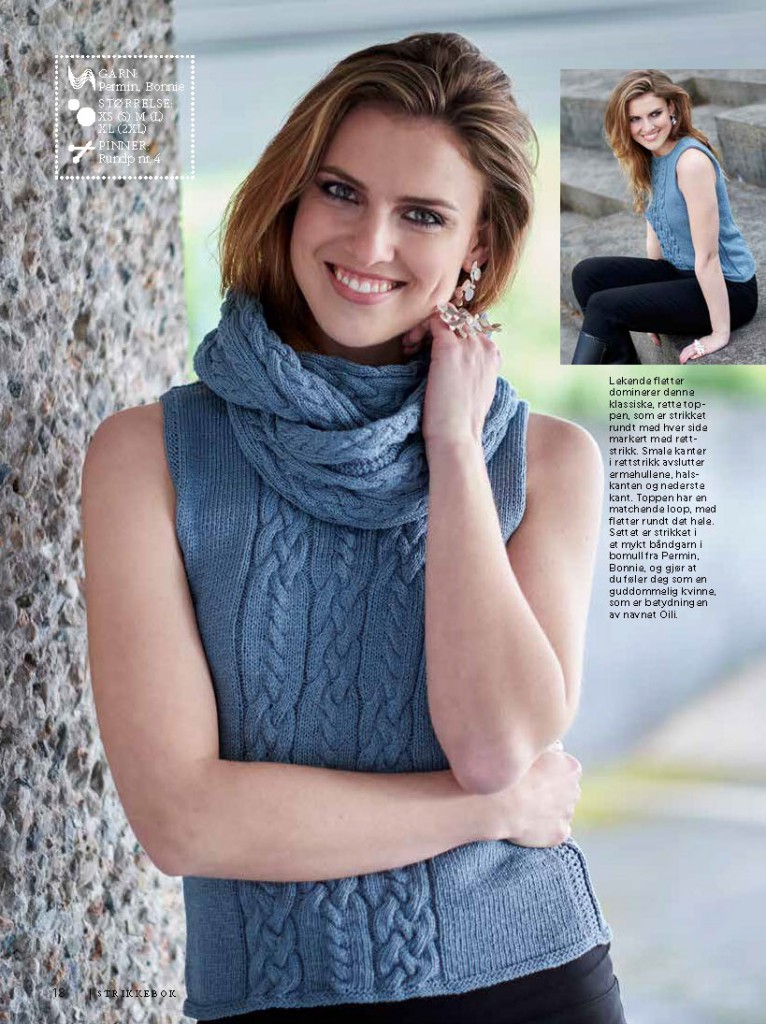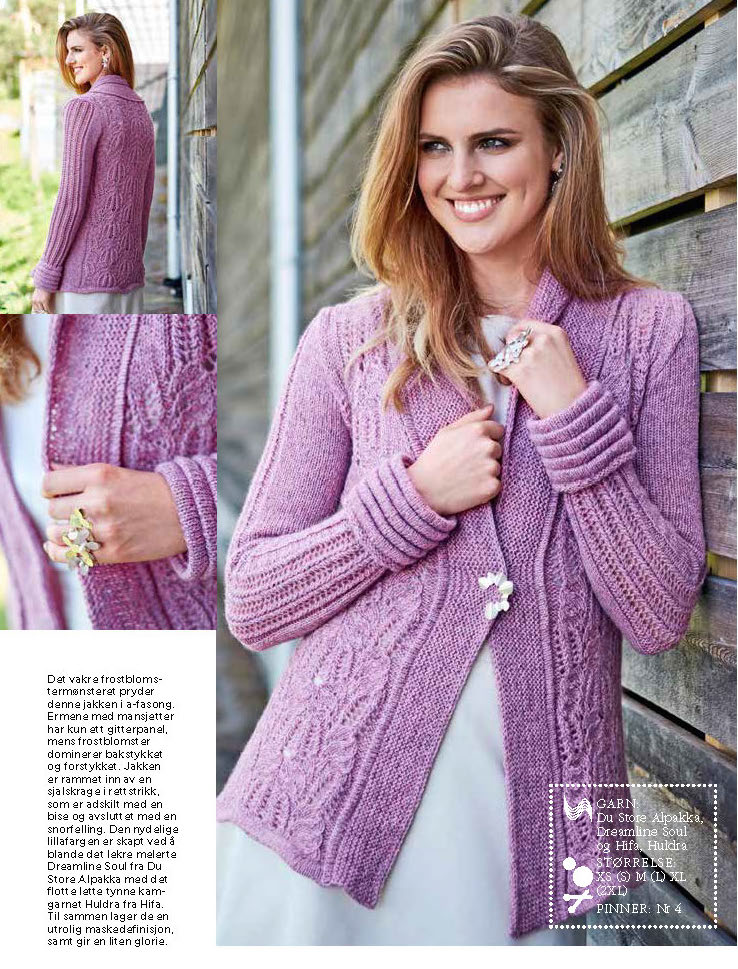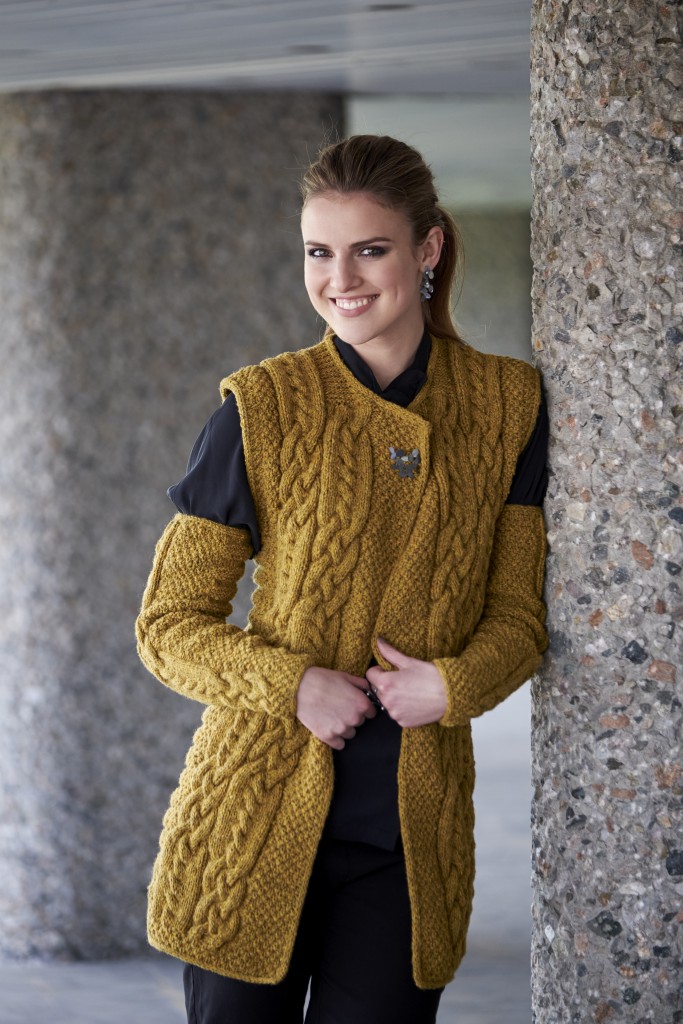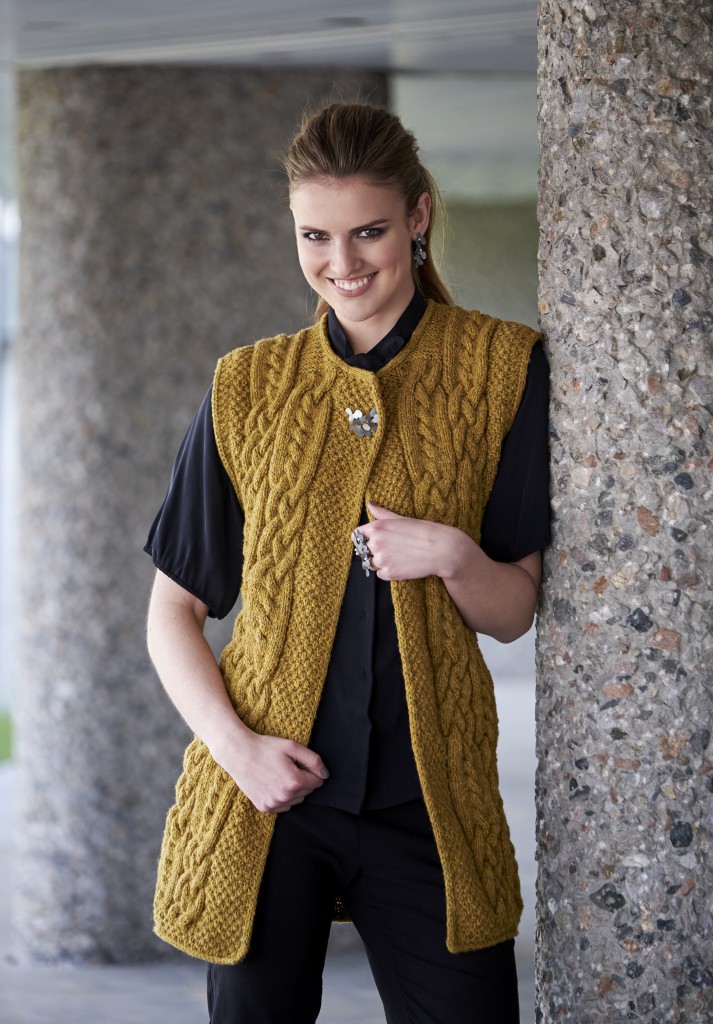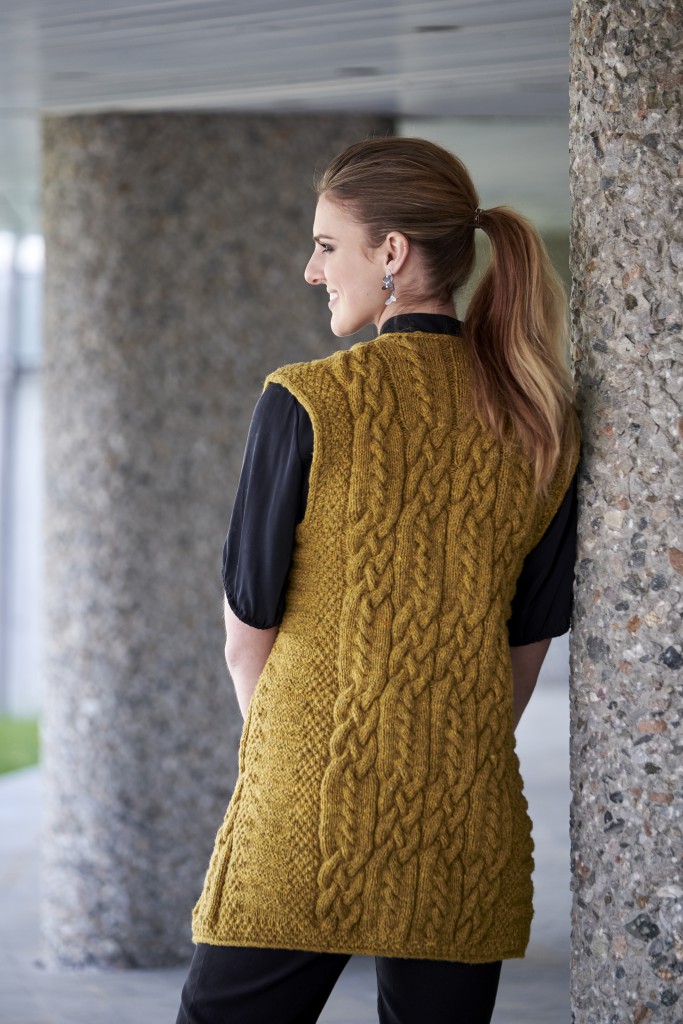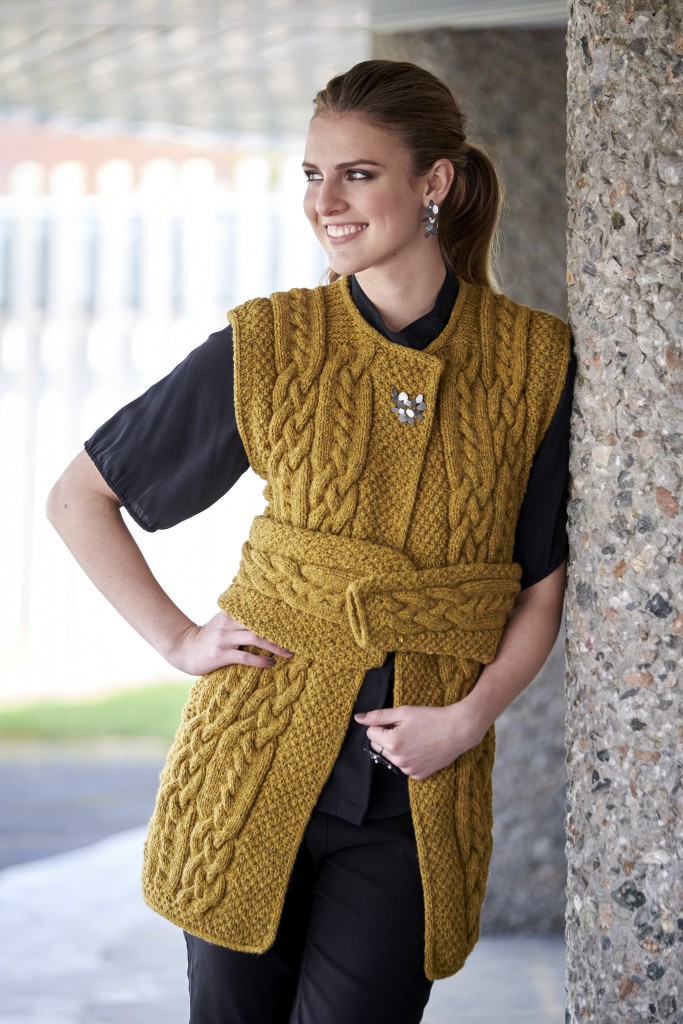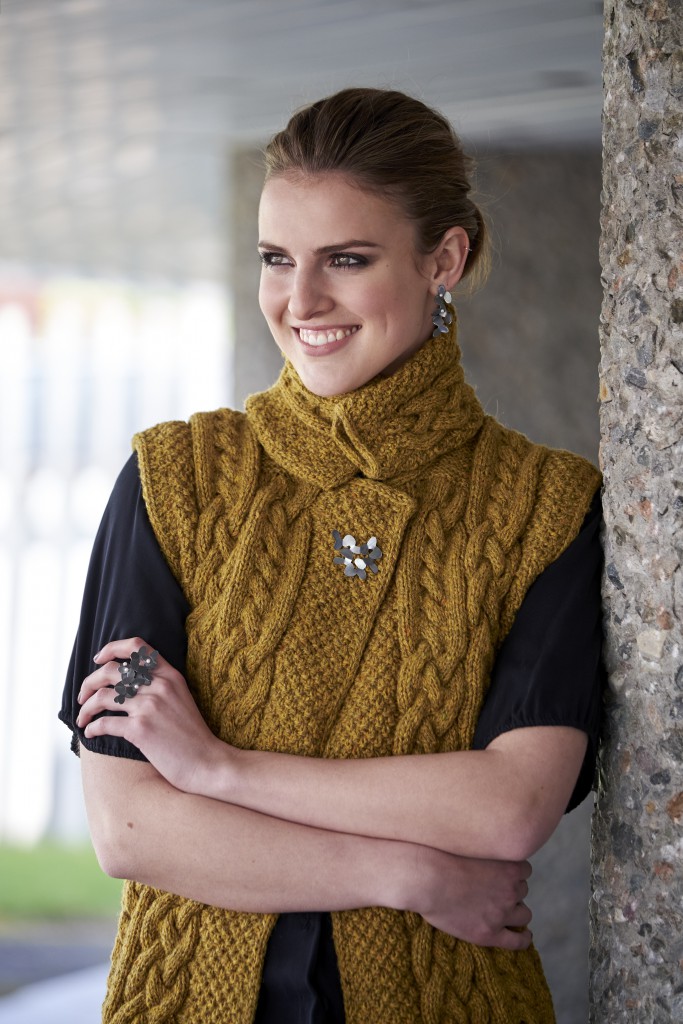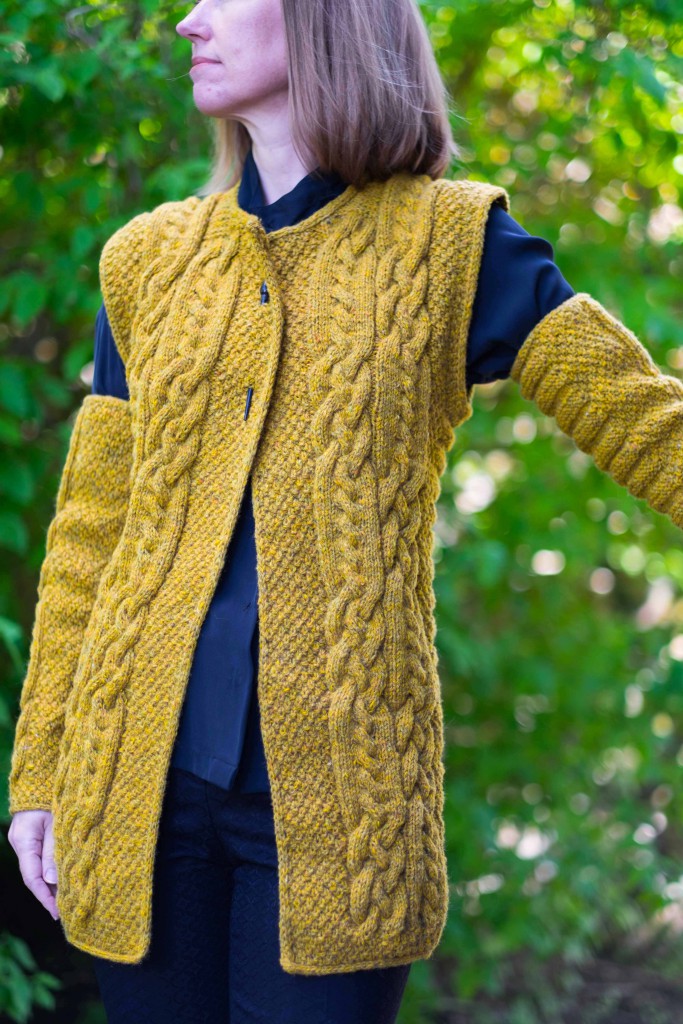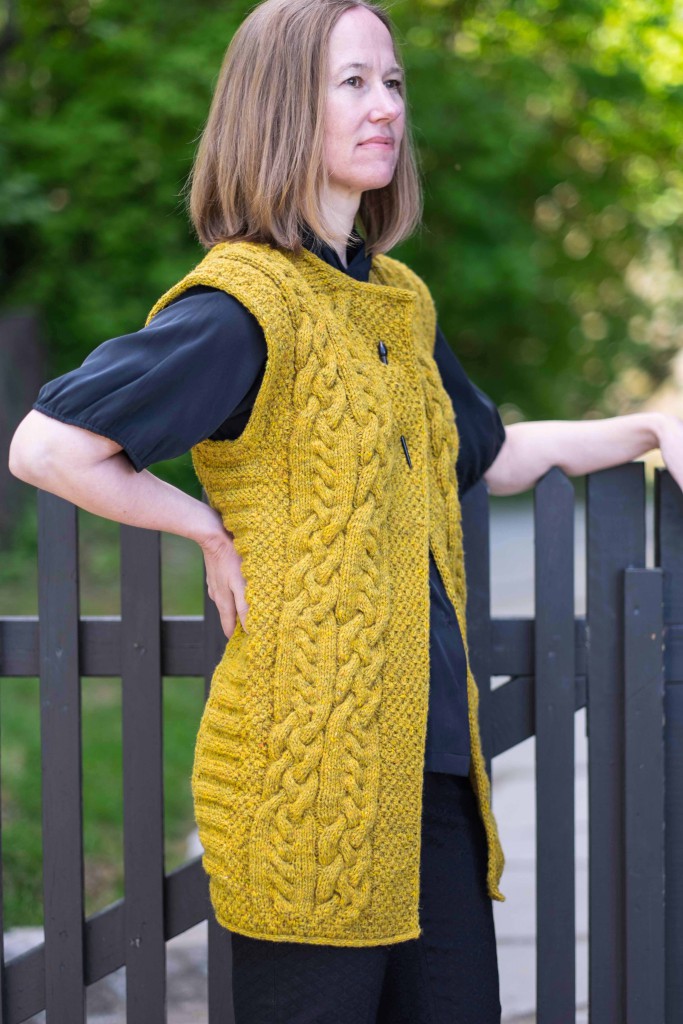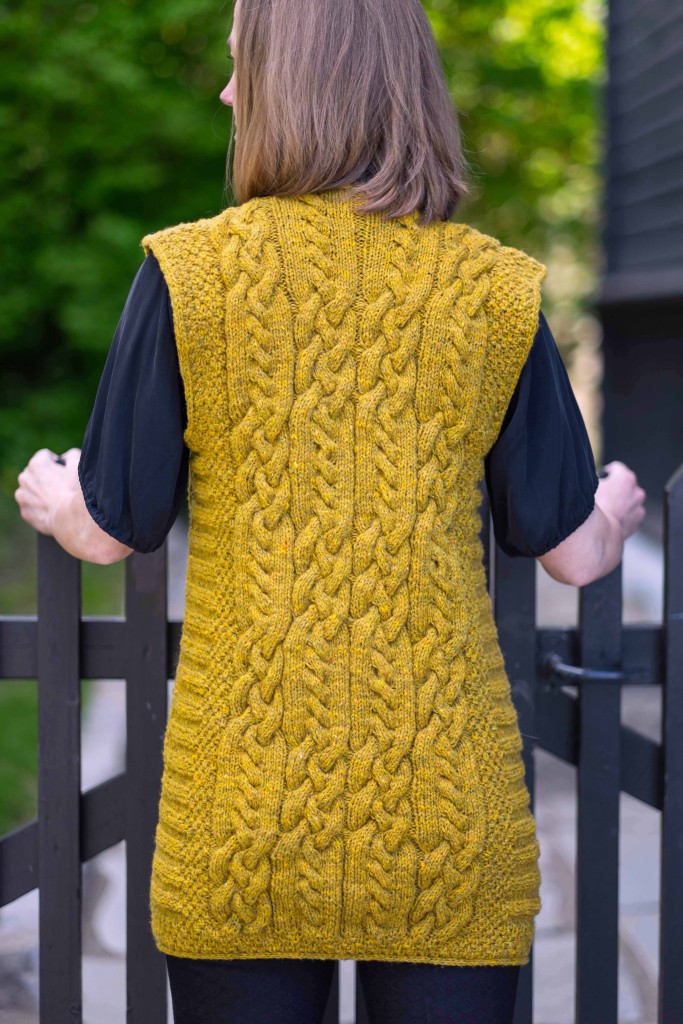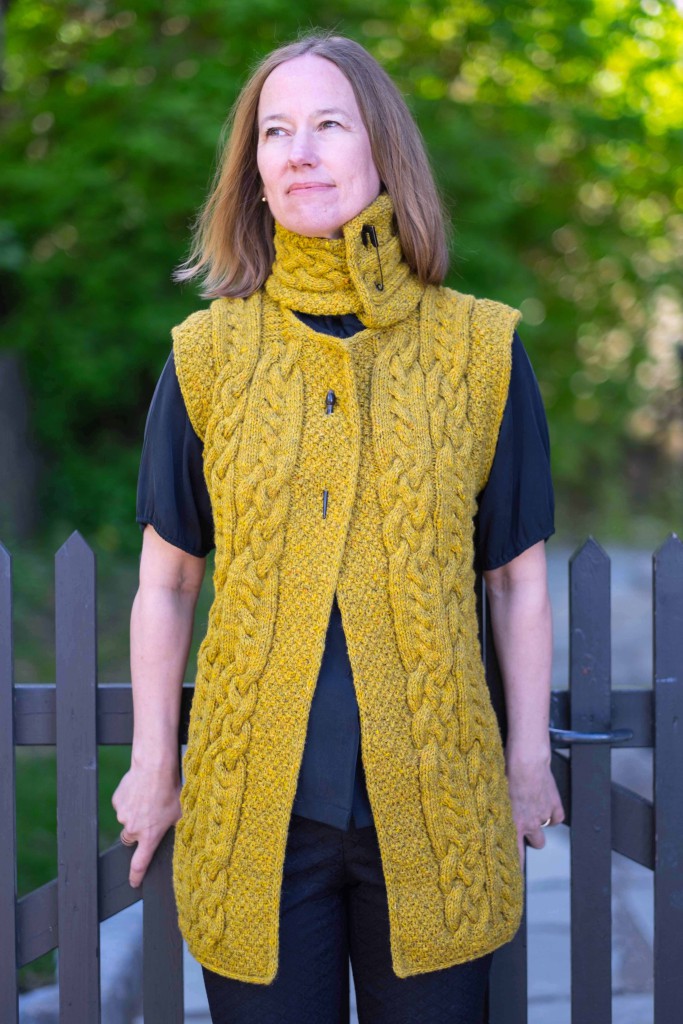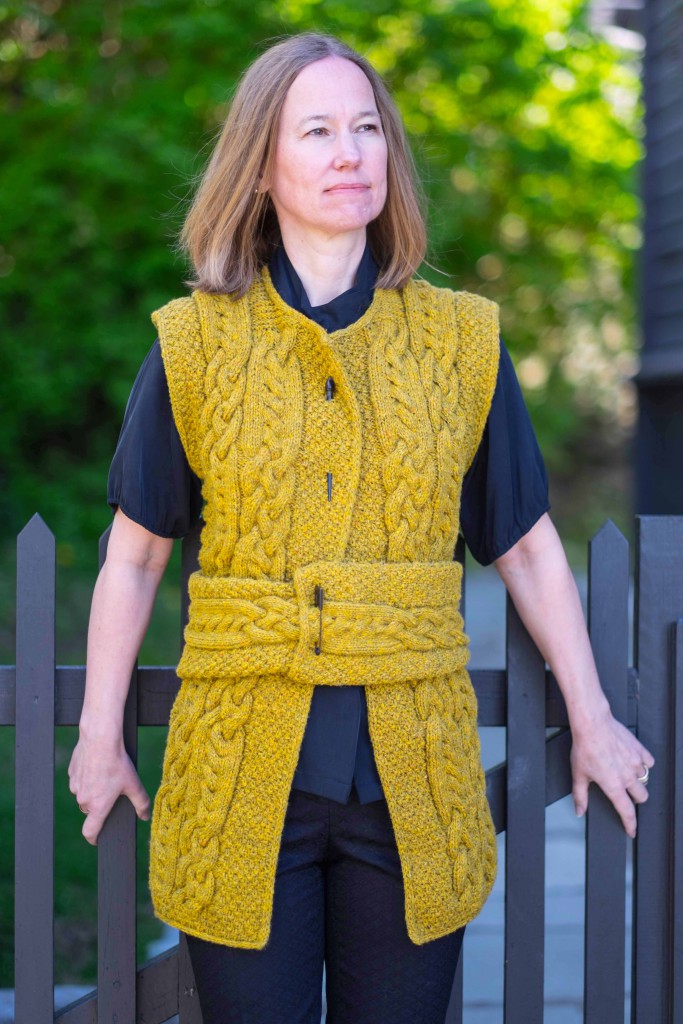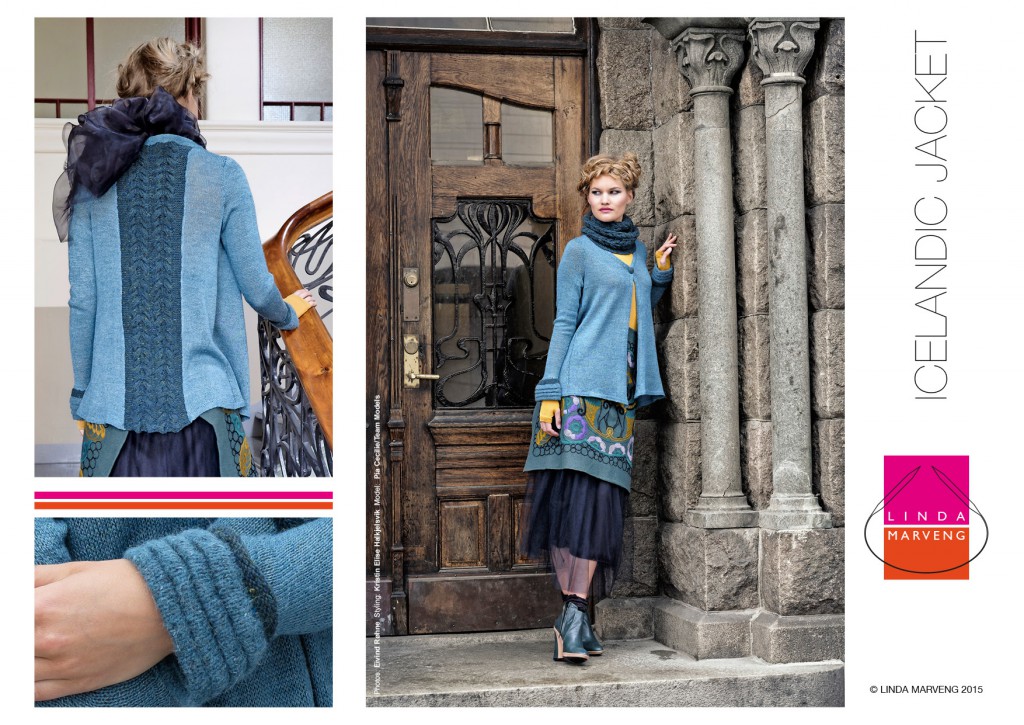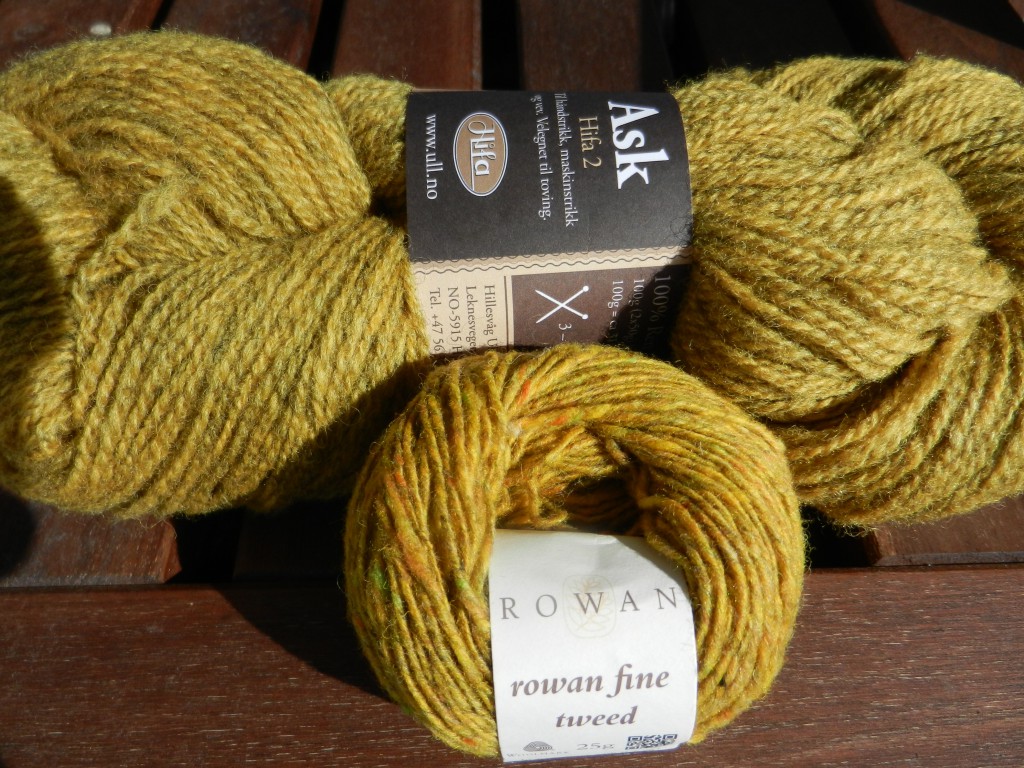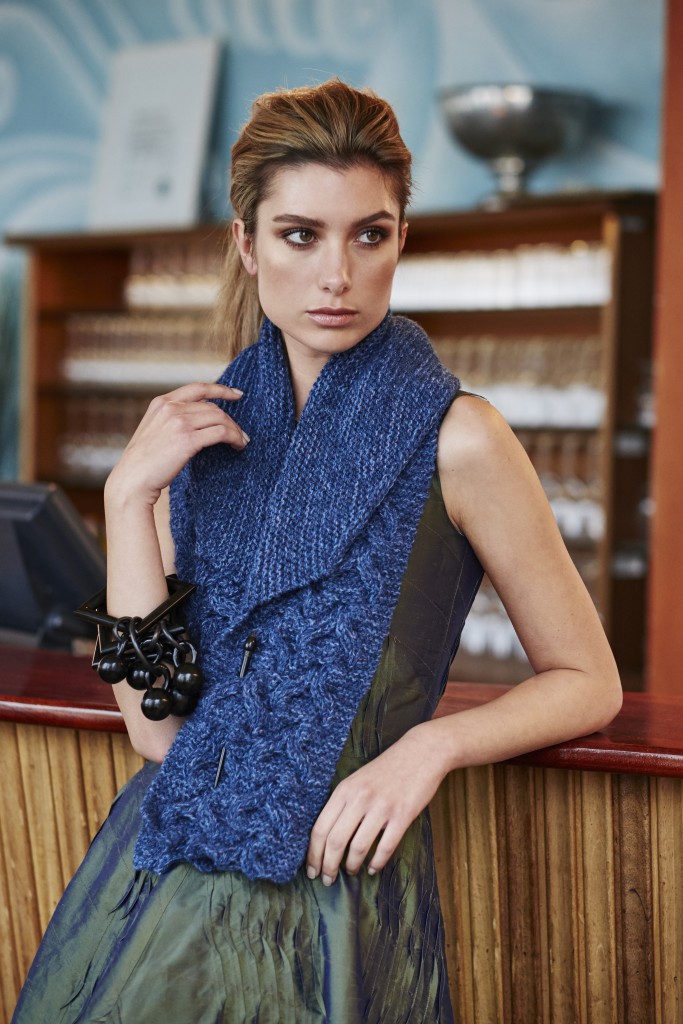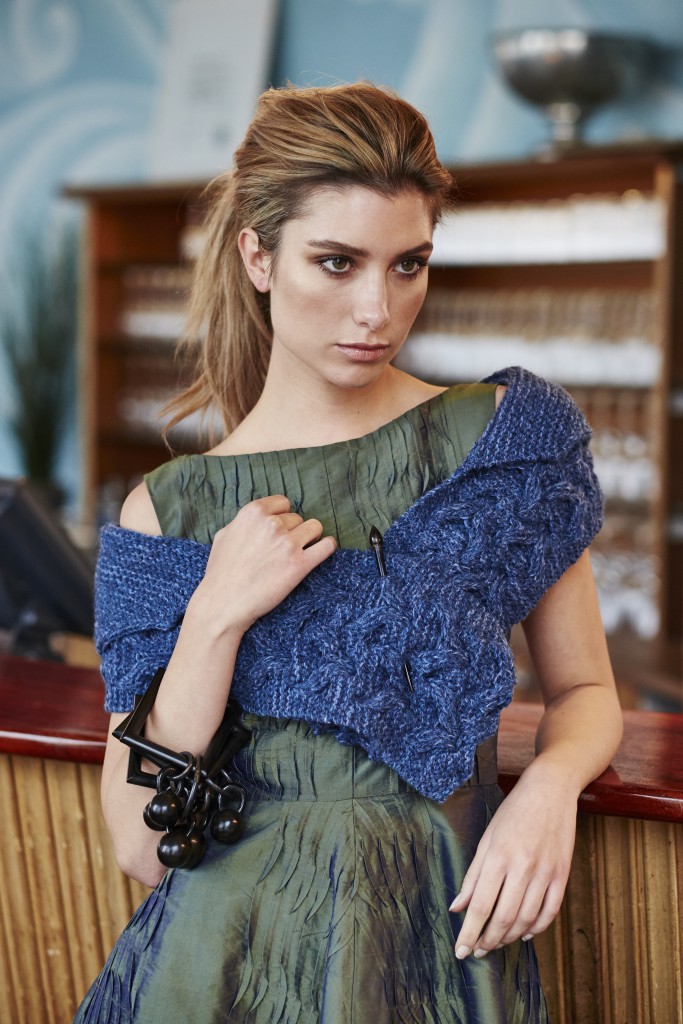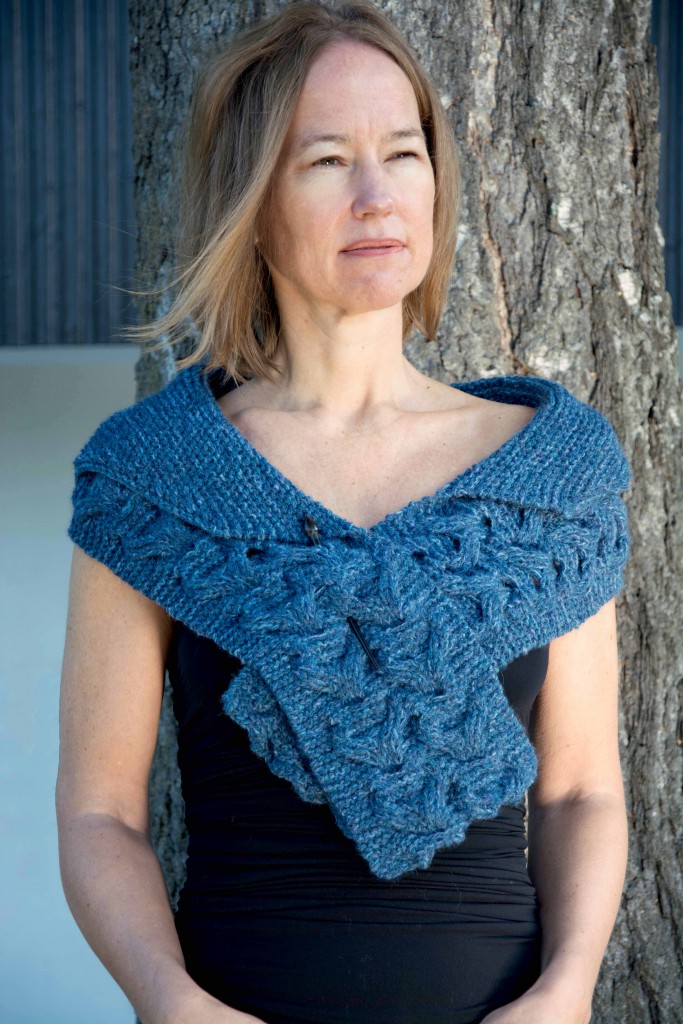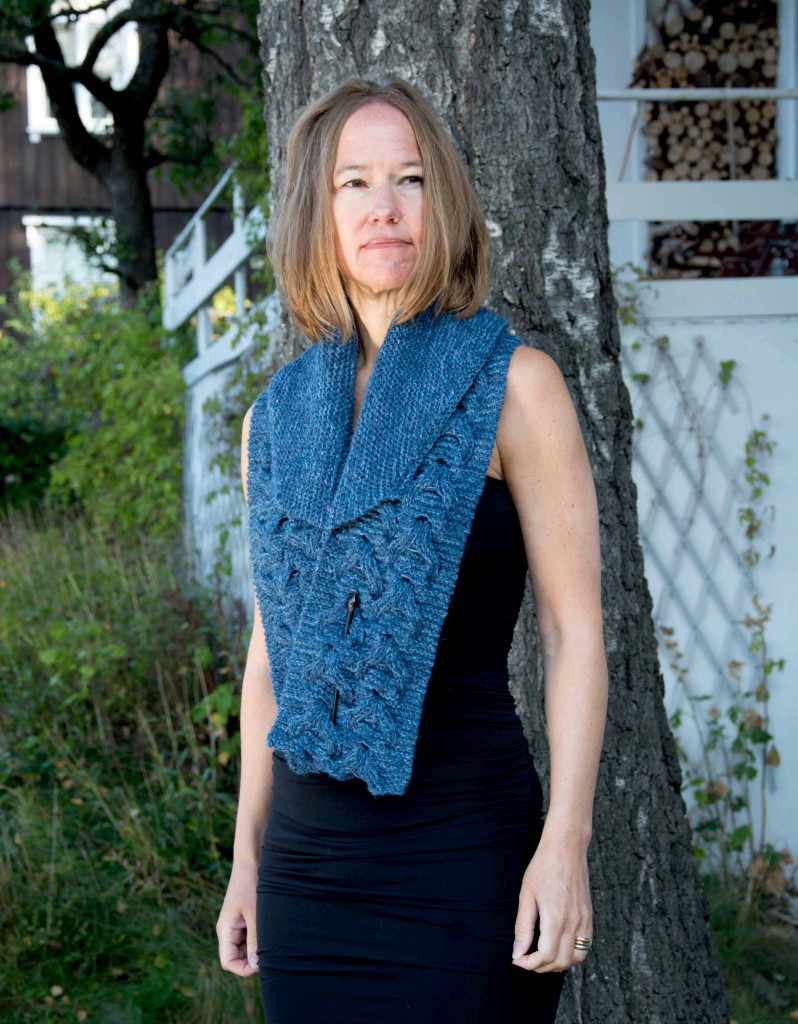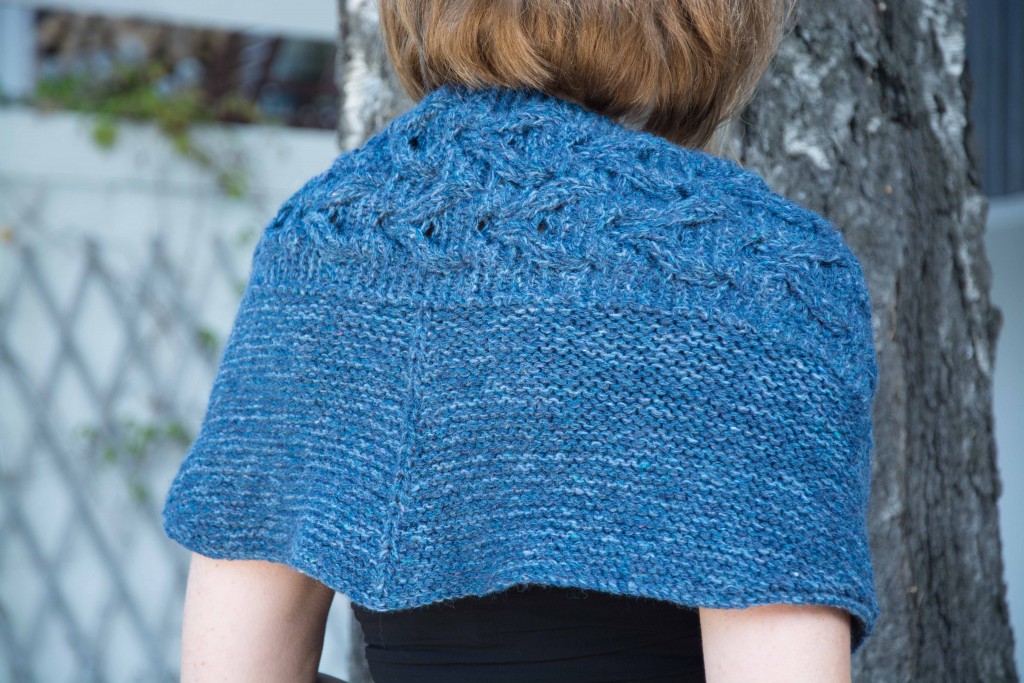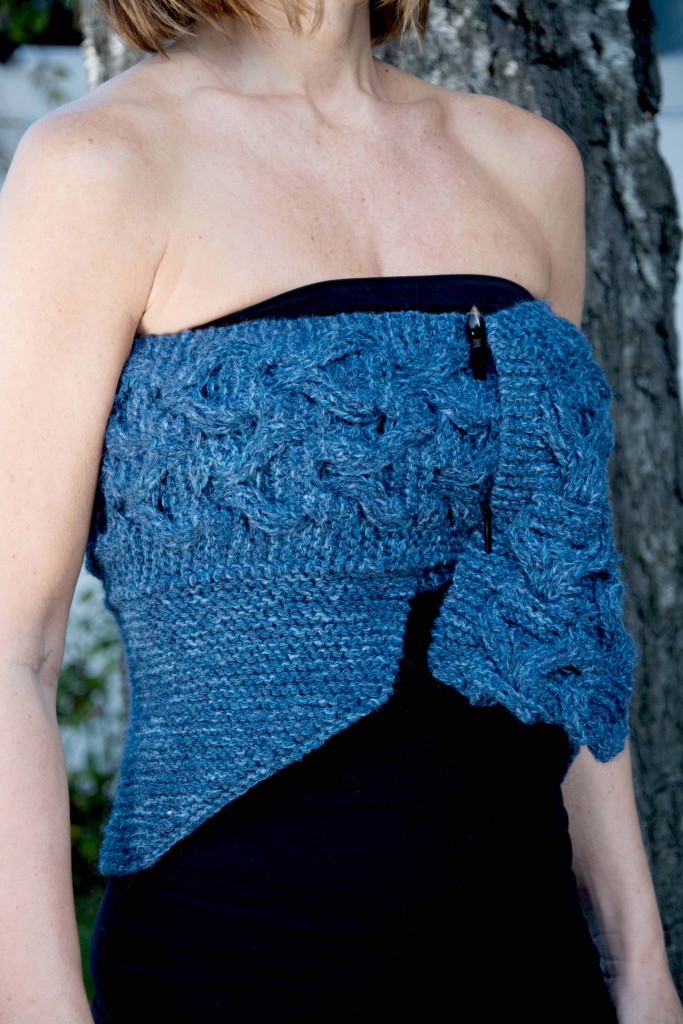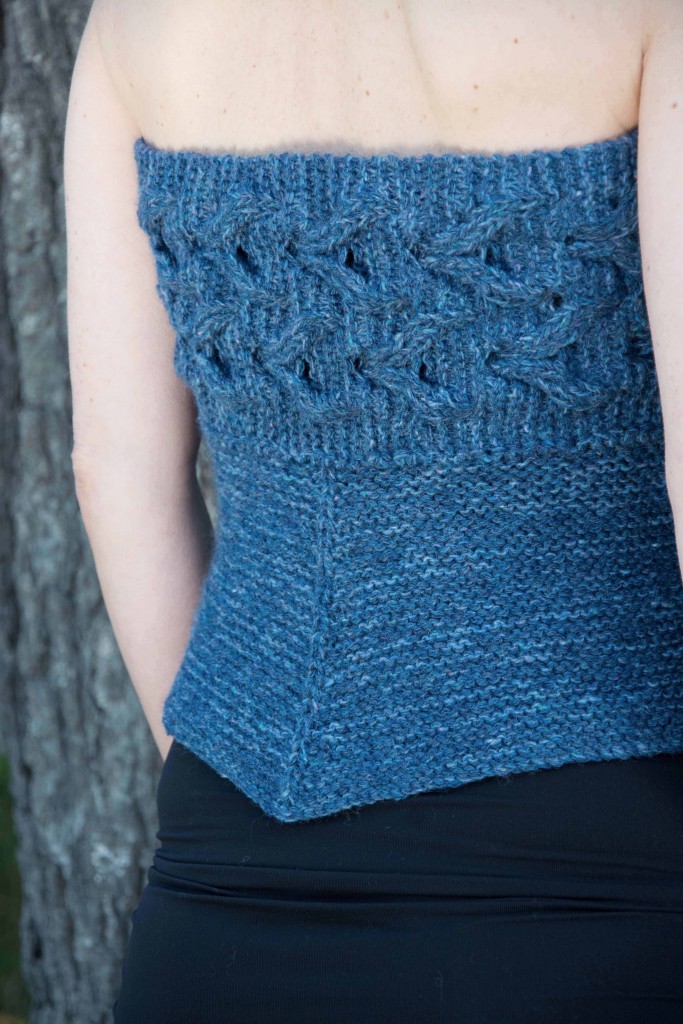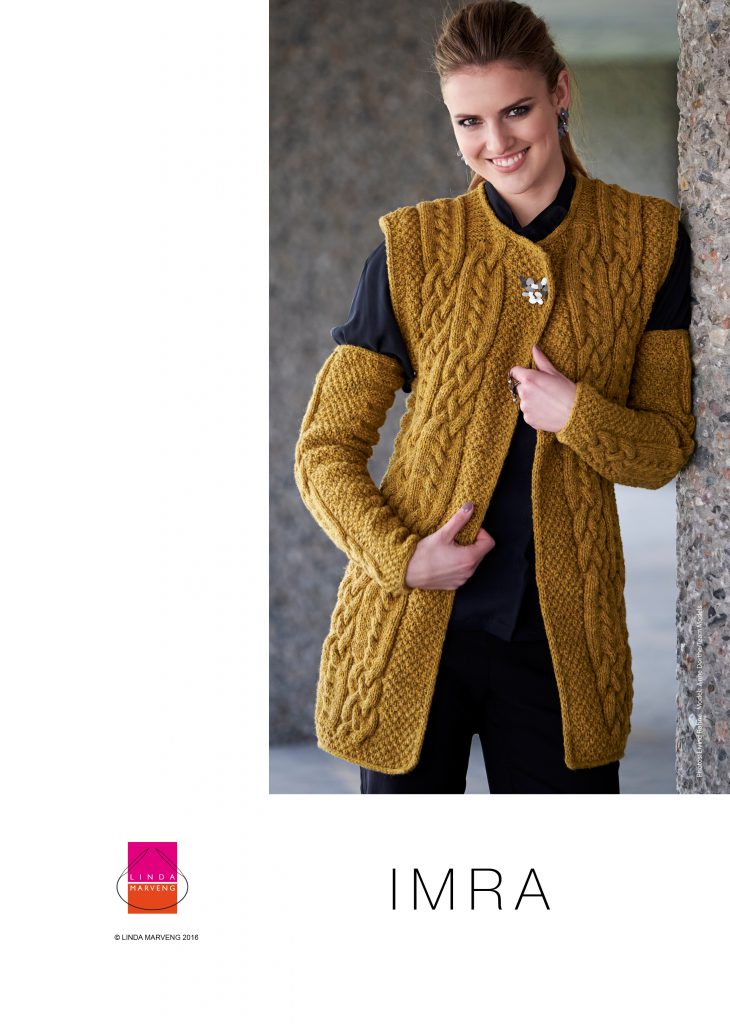 The long vest, Imra, has been released after a test knit in my group on Ravelry. As always I am curious to see what changes the test knitters do. This time it was a question of length and closure; one chose to make a short version and another added a buttonhole at the top. You can see some of the results on the pattern page. The Norwegian pattern was first published in Familien Strikk last August, and the magazine is still available to order in print or digitally, see klikk.no. Above you see the Vest modeled by the gorgeous Anne Dorthe/Team Models with hair & make up by Sissel Fylling, fantastic jewelry by Kaja Gjedebo and brilliantly captured by Eivind Røhne at Henie Onstad Kunstsenter. Here is my intro to the pattern: Poetic cables framed by reverse stockinette stripes and double seed stitch, was my idea for this straight long vest. I named this piece after the Arabic Poet, Imra. A small round neck has the same I-cord treatment as the armhole, front, and bottom edges. Match with a pair of loose sleeves that can also be worn around the waist or one as a neck tie. To achieve popping cables two yarns were combined to make a rich colored tweed yarn. I used the bouncy Hifa Ask and Rowan Fine Tweed.
The long vest, Imra, has been released after a test knit in my group on Ravelry. As always I am curious to see what changes the test knitters do. This time it was a question of length and closure; one chose to make a short version and another added a buttonhole at the top. You can see some of the results on the pattern page. The Norwegian pattern was first published in Familien Strikk last August, and the magazine is still available to order in print or digitally, see klikk.no. Above you see the Vest modeled by the gorgeous Anne Dorthe/Team Models with hair & make up by Sissel Fylling, fantastic jewelry by Kaja Gjedebo and brilliantly captured by Eivind Røhne at Henie Onstad Kunstsenter. Here is my intro to the pattern: Poetic cables framed by reverse stockinette stripes and double seed stitch, was my idea for this straight long vest. I named this piece after the Arabic Poet, Imra. A small round neck has the same I-cord treatment as the armhole, front, and bottom edges. Match with a pair of loose sleeves that can also be worn around the waist or one as a neck tie. To achieve popping cables two yarns were combined to make a rich colored tweed yarn. I used the bouncy Hifa Ask and Rowan Fine Tweed.
Sizes: XS (S, M, L, XL, 2XL)
Finished measurements: Bust: 84 (91, 98, 106, 116, 126) cm/33 (35.75, 38.5, 41.75, 45.75, 49.5)” Length: 81.5 (81.5, 81.5, 84, 84, 84) cm/32 (32, 32, 33, 33, 33)” Loose sleeve: Length: 49.5 cm/19.5″
Yarn: Hifa, Ask (100% wool, 100 g, 315 m/345 yds). Sample is knitted in Corn Yellow 6502. http://www.ull.no/garn/ullgarn/ask-melert Vest: 3 (3.5, 3.5, 4, 4, 4.5) skeins; 882 (954, 1025, 1120, 1216, 1323) m/965 (1043, 1121, 1225, 1330, 1447) yds. Loose Sleeves: 1 (1, 1.5, 1.5, 1.5, 1.5) skeins; 279 (313, 329, 362, 395, 428) m/305 (342, 360, 396, 432, 468) yds. Rowan, Fine Tweed (100% wool, 25 g, 90 m/98 yds). Sample is knitted in Leyburn 383. http://www.knitrowan.com/yarns/rowan-fine-tweed Vest: 10 (11, 12, 13, 14, 15) skeins; 882 (954, 1025, 1120, 1216, 1323) m/965 (1043, 1121, 1225, 1330, 1447) yds. Loose Sleeves: 4 (4, 4, 5, 5, 5) skeins; 279 (313, 329, 362, 395, 428) m/305 (342, 360, 396, 432, 468) yds. Note: Yarns are held together throughout.
Alternative yarn for Hifa, Ask: Cascade 220 Sport (100% wool, 50 g, 150 m/164 yds). http://www.cascadeyarns.com/cascade-220Sport.asp Madeline Tosh, Pashmina (75% superwash merino, 15% silk, 10% cashmere, 100 g, 329 m/360 yds). http://madelinetosh.com/pashmina/ Alternative yarn for both: Brooklyn Tweed, Shelter (100% wool, 50 g, 128 m/140 yds). http://www.brooklyntweed.com/shop/shelter/ Berroco, Blackstone Tweed (65% wool, 25% mohair, 10% angora, 50 g, 119 m/130 yds) http://www.berroco.com/yarns/blackstone-tweed BC Garn, Loch Lomond (100% wool, 50 g, 155 m/169 yds) http://garn.dk/en/wool/loch-lomond/
Needles: 4 mm/US 6 circular needle (80 cm/32″ and 40 cm/16″). 4 mm/US 6 DNPs for I-cord cast-on. Adjust needle size as neede to match gauge.
Notions: 1 m/1 yard thin round elastic for loose sleeves, cable needle, stitch markers, stitch holders, and yarn needle.
Gauge: 18 sts and 28 rows in st st and Double Seed st measures 10 cm/4″ square, blocked. 1 cable measures 8 cm/3.25″ across, blocked. 1 cable repeat measures 21.5 cm/7.5″ blocked. 28 rows in Cable measures 10 cm/4″ blocked.
Notes: The vest is worked in rows in one piece to the armhole where it is separated. Each front has a 3-sts I-cord edge that is worked at the same time as the vest. Both the narrow neckline and the armhole band has an I-cord bind off but the armhole band is worked in the round with a Double Seed stitch band. If you prefer a smaller armhole band continue working decreases. To achieve a looser bottom band, use a provisional cast-on method, and then make an I-cord bind off instead.

